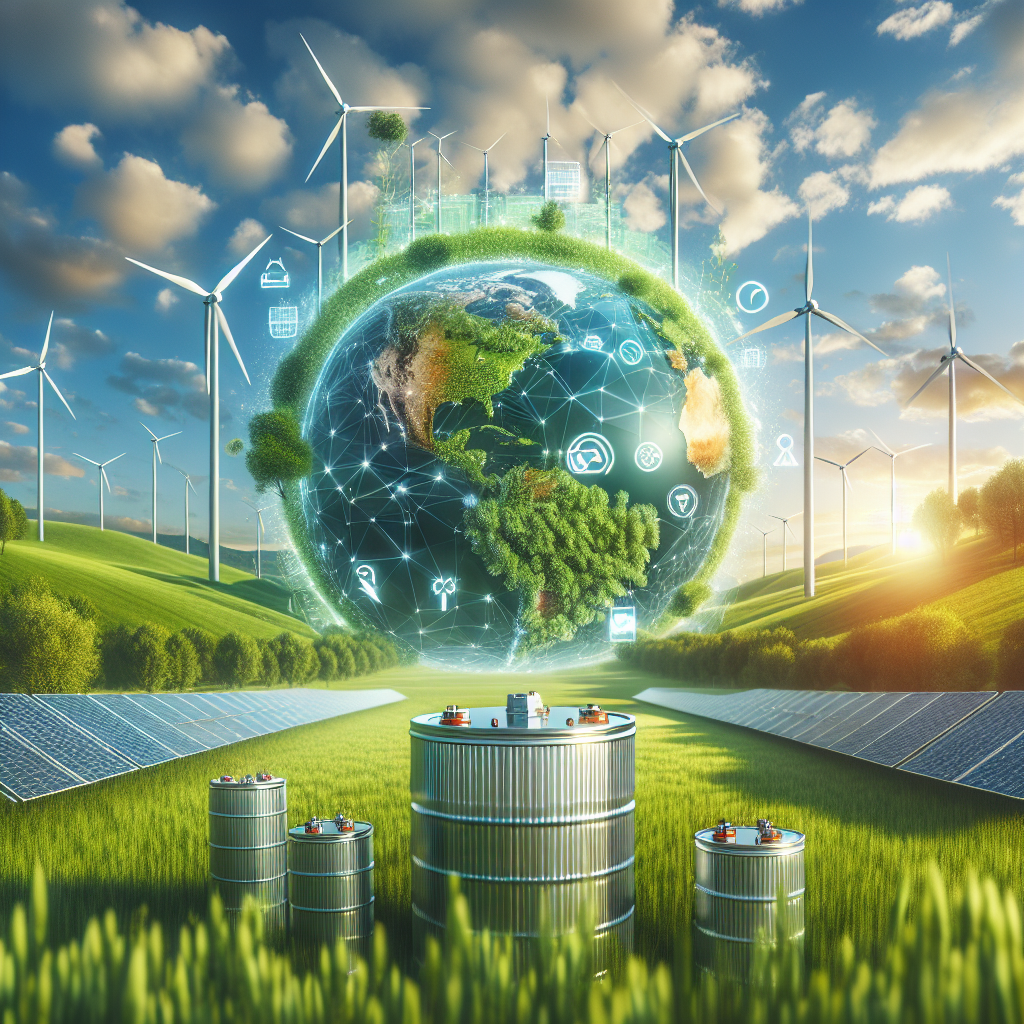The Future of Energy Storage: Sustainable Solutions for a Greener Planet
In the quest for a greener planet, the future of energy storage shines brightly as a beacon of hope. As the world pivots towards sustainable energy sources, the importance of efficient, reliable, and eco-friendly energy storage systems has never been more critical. This article delves into the innovative solutions and technologies that are shaping the future of energy storage, promising a more sustainable and resilient energy landscape.
The Evolution of Energy Storage
Traditionally, energy storage has been dominated by fossil fuels and lead-acid batteries, which pose significant environmental hazards. However, the past few decades have witnessed a seismic shift towards cleaner, renewable energy sources, such as solar and wind power. This transition necessitates advanced energy storage solutions that can efficiently store surplus energy for use during periods of low production.
Emerging Technologies in Energy Storage
1. Lithium-ion Batteries: While lithium-ion technology is not new, advancements have made these batteries more efficient, affordable, and longer-lasting. They are crucial in powering electric vehicles (EVs) and storing energy for residential and grid-scale applications.
2. Flow Batteries: Flow batteries, particularly vanadium redox flow batteries, offer a promising solution for large-scale energy storage. Their ability to store large amounts of energy and discharge it over an extended period without degradation makes them ideal for stabilizing renewable energy sources.
3. Solid-State Batteries: These batteries represent a breakthrough in energy storage, with higher energy density, improved safety, and longer lifespans than lithium-ion batteries. Solid-state technology is still in development but has the potential to revolutionize energy storage.
4. Hydrogen Storage: Hydrogen energy storage involves converting electricity into hydrogen through electrolysis and storing it for later use. This technology is particularly appealing for its potential to store energy seasonally, addressing the intermittency issue of renewable energy.
5. Compressed Air Energy Storage (CAES): CAES systems store energy by compressing air in underground caverns or containers. When energy is needed, the compressed air is released and used to generate electricity. This technology is gaining traction for its ability to provide large-scale, long-duration energy storage.
6. Thermal Energy Storage: This method stores energy in the form of heat or cold, which can be used for heating, cooling, or generating electricity. Innovations in materials and systems are improving the efficiency and applicability of thermal energy storage.
The Role of Policy and Investment
The transition to sustainable energy storage solutions is not solely a technological challenge but also a policy and financial one. Governments worldwide are implementing policies to support renewable energy and storage, including subsidies, tax incentives, and research funding. Additionally, the private sector’s investment in research, development, and deployment of energy storage technologies is critical to accelerating their adoption and reducing costs.
Environmental and Social Impacts
The shift towards sustainable energy storage has profound environmental and social implications. By reducing dependence on fossil fuels, these technologies can significantly lower greenhouse gas emissions, combat climate change, and reduce air pollution. Moreover, the decentralization of energy storage and generation can empower communities, improve energy security, and create green jobs.
Challenges and the Path Forward
Despite the promising developments, challenges remain. These include improving the efficiency and lifecycle of storage technologies, reducing costs, and addressing the environmental impact of battery production and disposal. Continued innovation, coupled with supportive policies and sustainable practices, is essential for overcoming these hurdles.
FAQs
Q: What is the most promising energy storage technology for the future?
A: While several technologies show promise, solid-state batteries and hydrogen storage stand out for their potential to offer high energy density, efficiency, and scalability.
Q: How do energy storage systems help in reducing carbon emissions?
A: Energy storage systems enable the integration of renewable energy sources into the grid by storing excess energy generated during peak production times and supplying it when production is low, thus reducing reliance on carbon-intensive energy sources.
Q: Can energy storage systems make renewable energy more reliable?
A: Yes, by mitigating the intermittency of renewable energy sources like solar and wind, energy storage systems ensure a stable and continuous energy supply, making renewable energy more reliable.
Q: Are there any environmental concerns associated with battery production?
A: Yes, battery production involves the extraction of metals and materials, which can have environmental impacts. Recycling and sustainable material sourcing are critical to mitigating these effects.
Q: What role do governments play in the adoption of energy storage technologies?
A: Governments play a crucial role through funding research and development, providing incentives for renewable energy and storage, setting regulatory frameworks, and fostering international cooperation on sustainable energy initiatives.
The future of energy storage is not just about technological innovation but about envisioning a sustainable, resilient, and equitable energy system for our planet. The journey towards this future requires the collaboration of scientists, policymakers, businesses, and communities. As we continue to explore and invest in sustainable solutions, the dream of a greener planet becomes increasingly attainable.

